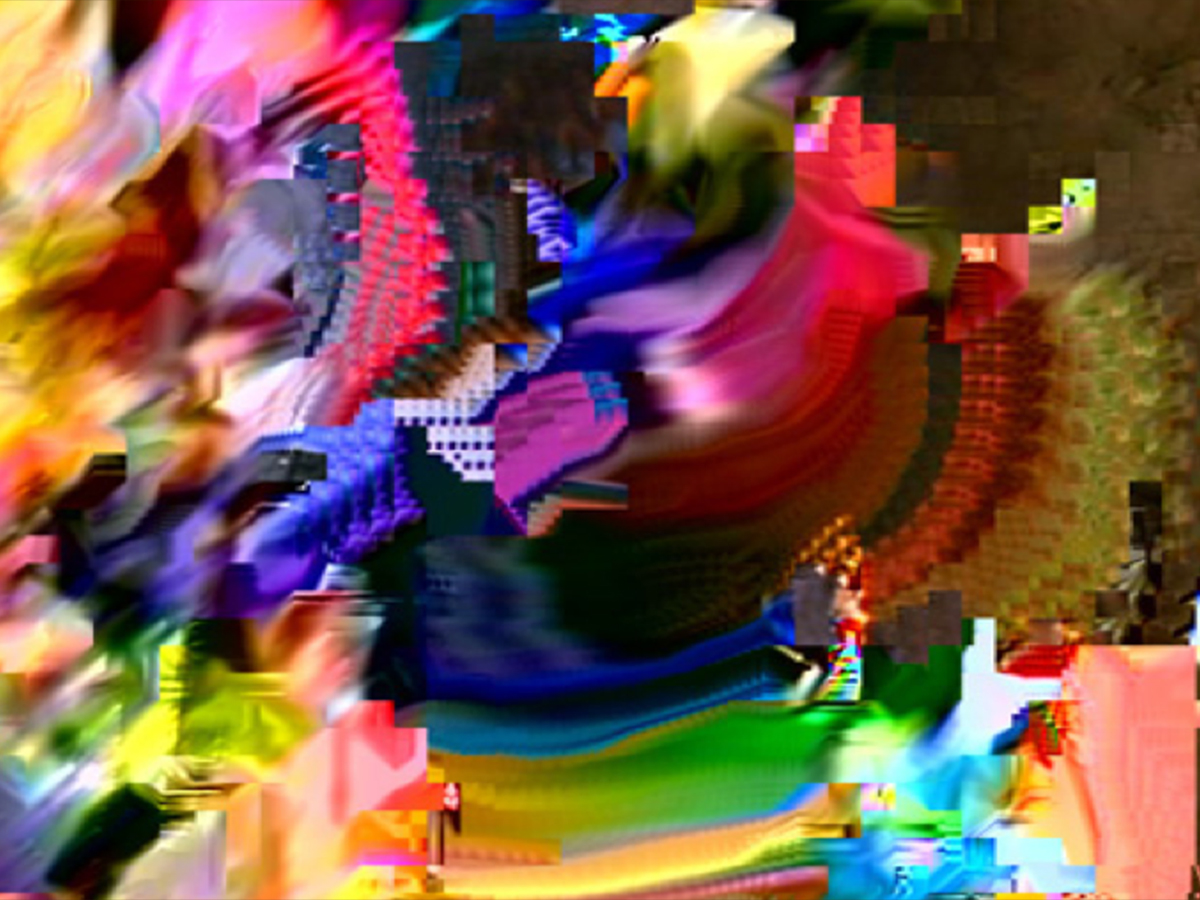Growing glitch aesthetics

Photo: Takeshi Murata. Monster Movie still (2005, 4:30 mins, colour, digital video).
Pixelated images parade across your screen. You're watching a video, which suddenly repeats a frame. A clear image is suddenly distorted.
Is it an accidental error? In this world of digital technology and the opportunity for visual perfection it offers, the seeming mistakes are more likely deliberate. They're glitch art.
Professor Carolyn Kane from Ryerson's School of Professional Communication has published several articles and has a forthcoming book on glitch called High-Tech Trash: Glitch, Noise, and Aesthetic Failure. Glitch art is when a visual error – like a video seemingly repeating, or a heavily pixelated image – is introduced as an aesthetic style choice.
In her research and analysis of design choices like glitch art, she employs an interdisciplinary approach rooted in history, both cultural and technical, and societal contexts. She examines the material history of the technology and aesthetic philosophy.
Professor Kane says glitch art deliberately introduces errors in an era when it's easier than ever to create digital images and videos with high levels of resolution.
We all live in a digital culture, professor Kane says, and the material logic of the digital technology of images is based on pixels. That the fundamental logic and structure of digital-visual technologies is highlighted within digital culture isn't surprising, she says.
The digital glitch art form began in the early 2000s, with experimental artists taking a do-it-yourself approach. Professor Kane says part of the appeal was a critique of pop culture. Since then, glitch art has grown in prevalence. In recent years, it has become commercialized and a popular design trend, appearing in fashion, advertising, marketing campaigns and television commercials. Examples of glitch art can be found nearly everywhere these days, from music videos like Kanye West's "Welcome to Heartbreak" and Rihanna's "Rude Boy," to the television show iCarly, to movies like Paranormal Activity and Cloverfield, to The New York Times Magazine's 2016 cover of Edward Snowden. Adidas has even designed a soccer cleat called Glitch.
"That's the nature of fashion and commercial culture. They're always looking for the new and novel," professor Kane said.
Because digital failure is a novelty, that makes it saleable in contemporary media culture. Glitch art's highlighting of failure is also readily compatible with industry trends, such as the mantras popular in Silicon Valley: "fail better" and "fail faster." No one with a Silicon Valley tech startup actually wants to fail, she says, but there is a rhetoric of fashionable failure used to invoke a veneer of innovation, regardless of whether or not real innovation actually exists.
Professor Kane has also begun extensive examinations of colour design choices, and she recently launched the Colour Media Lab at The Catalyst to pursue this line of research. She hopes it can be a space where people from different disciplines can come together to discuss colour.
Research for the book High-Tech Trash: Glitch, Noise, and Aesthetic Failure was funded by the Social Sciences and Humanities Research Council of Canada.